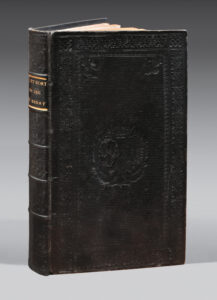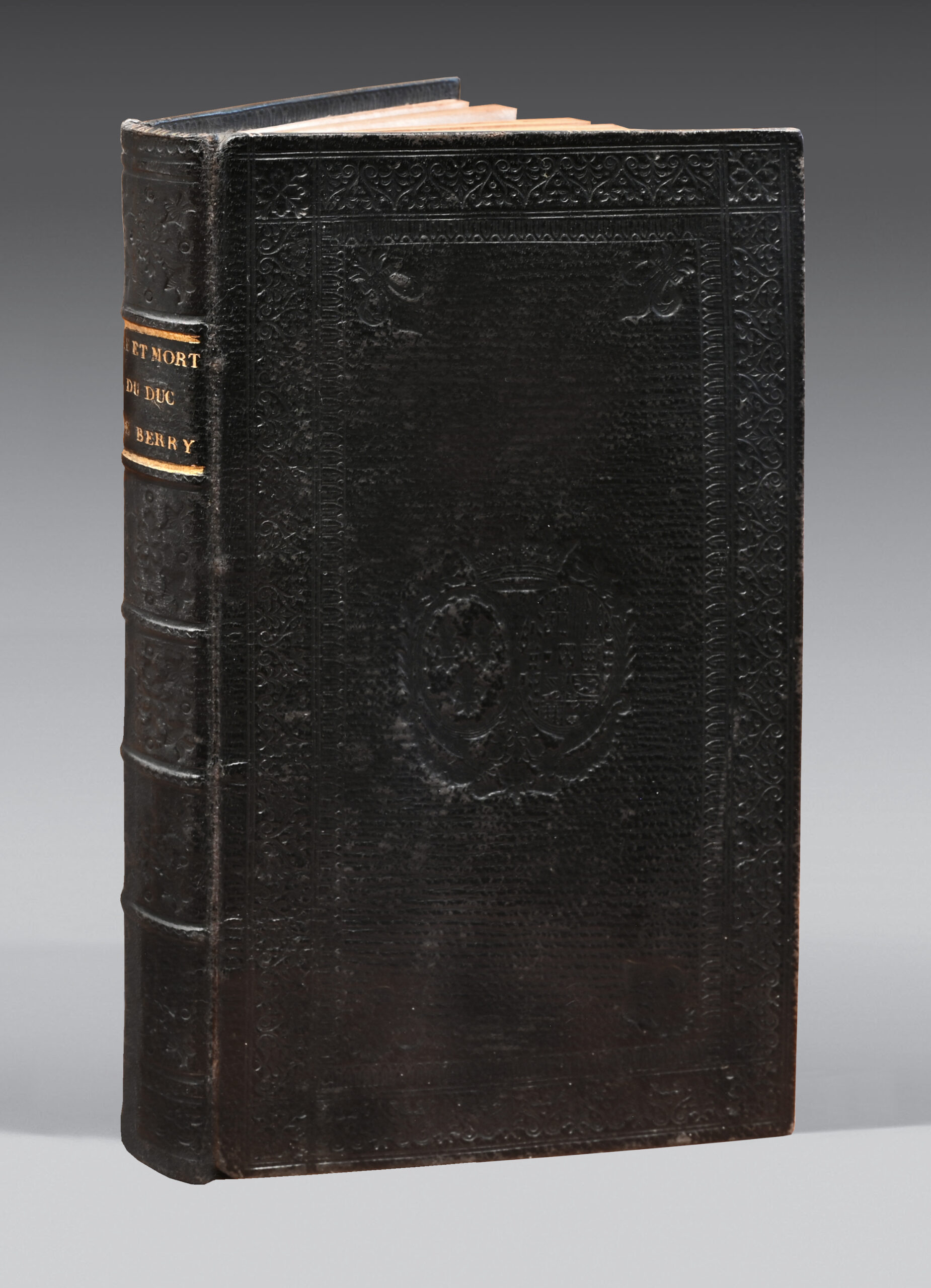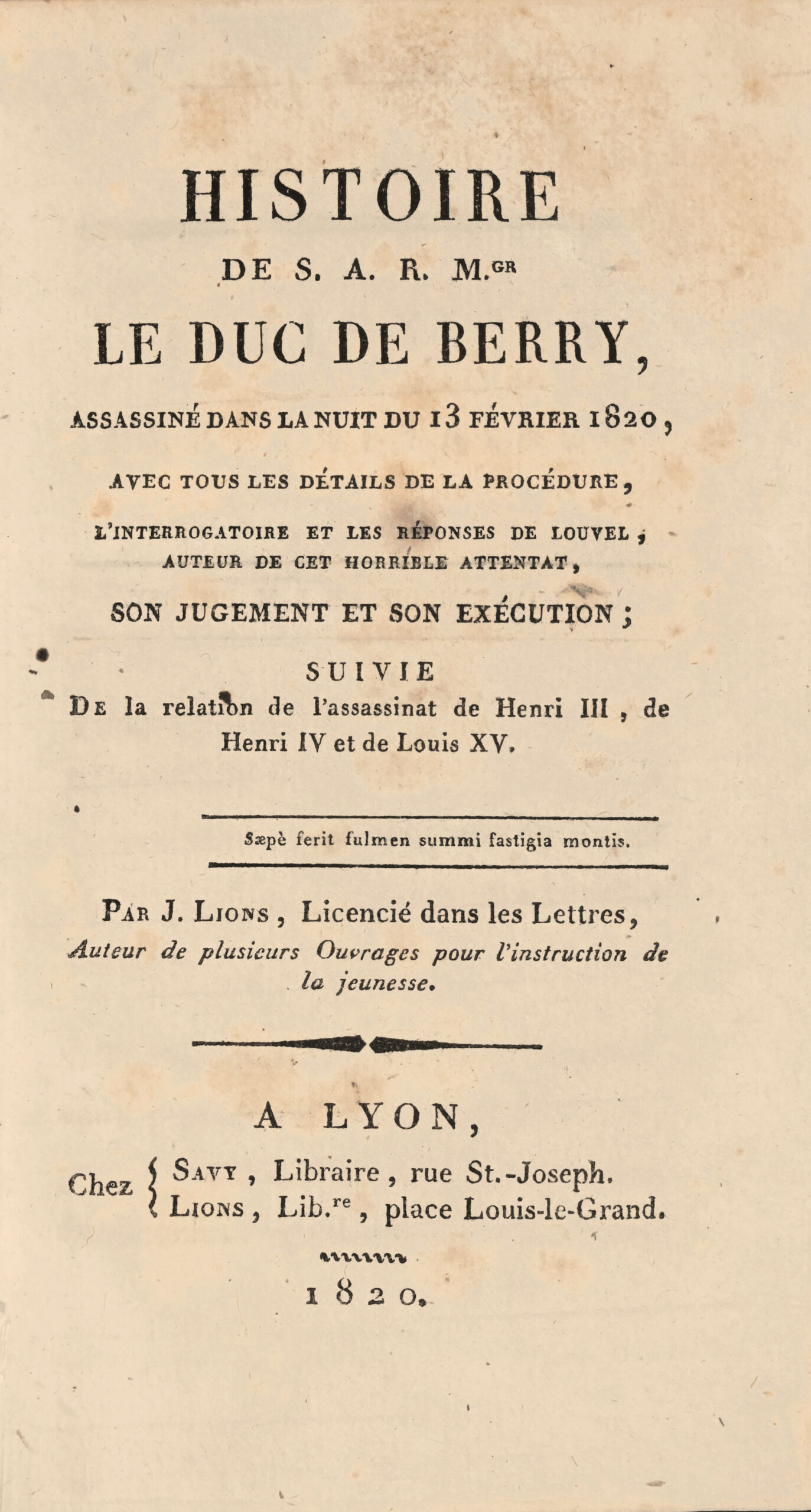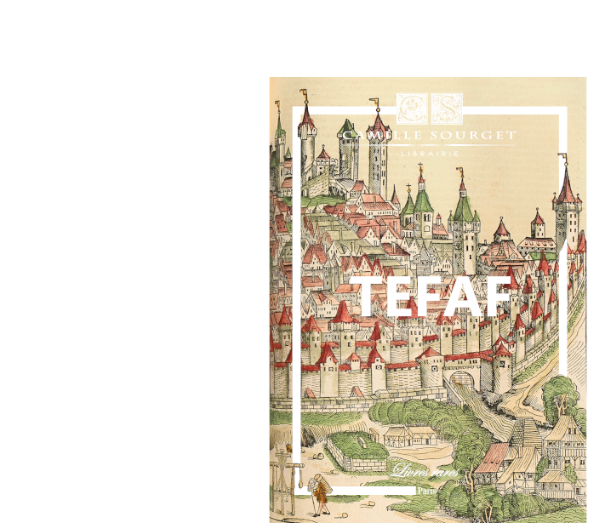Lyon, Savy, Lions, 1820.
12mo. Xii pp., 348 pp., some foxing. Straight-grained black morocco, blind-stamped double frame around the covers, blind-stamped arms in the center, fleurs-de-lys in the corners, decorated ribbed spine, gilt edges, crêm doublures and endlêves. Contemporary mourning binding signed by Simier, the king’s bookbinder.
168 x 95 mm.
Very rare first edition.
The author’s own copy offered to the Duchesse de Berry, enriched with the autograph dedication by J. Lions: « Madame, Vivement touché des malheurs dont votre A. R. a été frappée, j’ai voulu aussi élever ma faible voix pour exprimer la douleur commune… ».
On 13 February 1820, the Duc de Berry collapsed on the steps of the Opéra on rue Richelieu in Paris. He had just been stabbed by a workman, Louis Louvel.
The victim was the nephew of the late King Louis XVIII and the only person likely to provide the royal family with an heir.
The murderer was a fanatical republican who wanted to extinguish the Bourbon dynasty. His crime aroused immense emotion. The ultra-royalists accused the hêd of the Decazes government of laxity. ‘His foot slipped into his blood’, wrote the illustrious Chatêubriand.
However, hope soon revived among the Bourbons. News arrived that the Duc de Berry’s wife was pregnant! On 29 September, she gave birth to a posthumous son, Henri.
The poets Alphonse de Lamartine and Victor Hugo added their young talents to the celebrations accompanying the birth of this ‘miracle child’.
A public subscription was organized to give him the Chambord estate. Hence the title of Count of Chambord, which would henceforth be his.
“The Duc de Berry, second son of the Comte d’Artois (1778-1820), followed his father in emigration. In 1814, he returned to France with the allies. When Napoleon returned from Elba, the Duc de Berry was appointed lêder of the army that was to be assembled in front of Paris, but which was reduced to an imperceptible number of loyalists. After the Second Restoration, the Duc de Berry was kept out of power by Louis XVIII, and in 1816 he married Princess Caroline of Naples, sister of Queen Christine, Queen of Spain. On 13 February 1820, as he was lêving the Opera, he was assassinated by Louvel. Seven months after his dêth his wife gave birth to a son, the Duke of Bordêux.”
In 1832 the Duchess of Berry, humiliated and bruised by exile after the July Revolution, resolved to attempt a restoration by force of arms. This attempt was to prove futile and disastrous, as the royalist party was brought down in one fell swoop.
A precious copy printed on fine Holland paper preserved in its first mourning binding in black morocco by Simier with the arms of the Duchesse de Berry.



